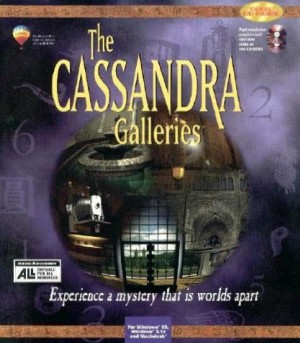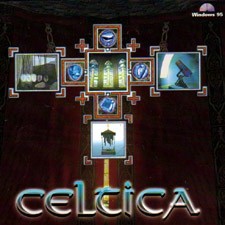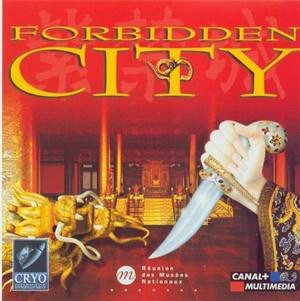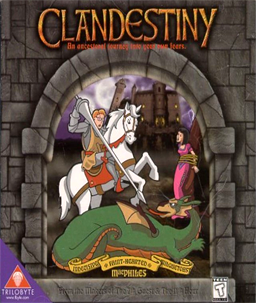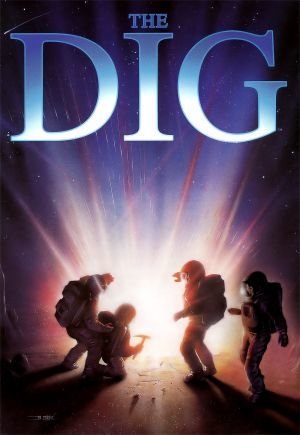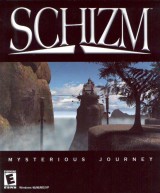Review for Prisoner of Ice
FTHANGH'G CTHULHU IAEEE!
If the only thing this reminds you of is your last visit to the dentist, you are probably not among the fans of Howard Philips Lovecraft. His numerous short stories and novellas built a complex and disturbing mythology, and spawned many continuations in various forms, including computer games. Despite the complexity of Lovecraft's works, unfortunately these continuations often chose to focus on only one facet: the Great Old Ones, a race of alien beings of godlike power, led by octopus-headed Cthulhu, to whom power-hungry madmen are trying to give control over the Earth – usually through dark rituals and chanting weird stuff in capital letters.
Prisoner of Ice is no exception, though Cthulhu and his brethren do not enter it immediately. The action takes place in 1937, and begins as a British submarine is returning from having rescued a scientist from a German base in the Antarctic, where it also recovered two mysterious crates, frozen in ice. Unfortunately, the submarine gets attacked, fire erupts in the hold, the ice protecting one of the crates thaws, and out springs the titular prisoner: a blue, tentacled monster clearly intent on killing everybody on board – starting with the captain. You, as lieutenant Ryan, an American secret service agent who was part of the rescue mission, take control of the sub and must find a way to save yourself and the crew from the monster. As the game progresses, you will travel to various locations on the trail of those 'prisoners of ice' (though, actually, it's mostly them who will be running after you, not the other way round), slowly discovering that they are all part of yet another great plan to give over the keys to our world to the Great Old Ones.
The most startling discovery of all is probably that the game is a follow-up to another game by Infogrames, Shadow of the Comet. This is never clearly stated on the box or manual and is only revealed halfway through the game. Not stating it more obviously makes little sense from a marketing perspective, but I guess it is only fair, as the two games feel very different. Whereas Shadow of the Comet was centred around a little town and its mysterious inhabitants and buried secrets, Prisoner of Ice moves rapidly from place to place and is much more plot- than character-driven. The former slowly built a thick, disturbing atmosphere; the latter relies far more on quick, and often cheap, thrills. While more likely to make you jump in your seat at times, Prisoner of Ice is ultimately far less scary.
It is also different story-wise, and is by no means a direct sequel. Though John Parker, the hero of the older game, makes an appearance, what happened in Illsmouth in 1910 is of little importance this time. A couple of other characters from Shadow of the Comet also return, and it might feel to those who have not played it that the game does not explain well what is going on with them. Well, it didn't make much sense to me either, so I guess there is more to blame here than just not having properly summed up the previous game. As a matter of fact, there were quite a few plot elements that I did not really understand, especially toward the conclusion. The big ritual which ends the game left me particularly stumped, forcing me to solve it by trying things at random until something right happened. Maybe players are supposed to have studied the Necronomicon before launching into the game? Or maybe the over-the-top, dark-magic atmosphere of the end is supposed to let the designers get away with that? The writing near the end could also be called over the top, as it shares the plot's qualities and failings as the story progresses. At least the translation from French is not to be blamed this time, as it was done well, apart from a few minor mistakes that you would only notice by playing both versions.
Oh, by the way, did I say "ritual"? Well, yes, I guess I did. After all, the game does belong to the so-called "Cthulhu mythos". And so it has dark rituals and power-hungry madmen chanting weird stuff in capital letters. As well as bluish monsters that go 'rrrhhh'. And ghosts. And Nazis. And traitors. And secret societies. And time travel. And Mayan gods. And Halley's comet. And a magical sword. Even the ever-delightfully mysterious (if somewhat nonsensical) Cthulhian motto 'That is not dead which can eternal lie, and with strange aeons even death may die' manages to get quoted (or, rather, misquoted). Three times. It should not work. Not by any stretch of logic. The game should crumble under the weight of all those clichés. And yet, most of the time, it does work. Praise your favourite dark deity for that.
Or, rather, don't. Praise the game's pacing instead. From the first attack on the submarine to that final ritual, you hardly have a second to breathe, with each life-threatening situation you escape from soon being replaced by another. This tension is the game's most striking quality and, caught in a blur, it is likely you will not have time to dwell on the plot holes and clichés – and even if you do, you will probably be inclined to forget about them and just enjoy the ride. Still, the price to pay for that tension is, obviously, a decrease in difficulty. The gameplay mostly consists of inventory puzzles and, while not insultingly easy, they do not constitute much of a challenge and do not slow down the game's pace by much. Another feature that contributes to the tension is the use of some timed sequences. Since they are, like the rest of the game, rather easy, you will probably solve them before realising they were timed. Still, if that is not the case, the game provides a nice autosave system – a welcome improvement over Shadow of the Comet.
Speaking of improvements, the third-person perspective remains, but the needlessly awkward direct control method is gone, replaced by a more practical point and click interface. In the couple of years between the two games, computers had also gone "multimedia", which means that Prisoner of Ice sounds and looks much better. The digital soundtrack is a treat, oscillating, much like the game, between fast-paced parts and slower, tension-building pieces. The quality of the audio files is unfortunately very low, but what you can hear through the constant hissing is worth hearing.
The graphics are exactly fitted to the story. The designers clearly aimed for a "graphic novel" sort of look, and it works perfectly. The gritty, realistic visual style, combined with the freedom given by drawing, sets the mood right on the edge of reality – which is precisely where a Lovecraftian tale should be. The various flashback cutscenes are especially stunning and would be well worth appearing in print. The only blemish is the use of pre-rendered 3D for the character sprites. I can understand that 3D is cheaper to animate, but it looks completely out of place here. And this is made worse by the fact that, for some odd reason, the characters all have a wrong aspect ratio and end up looking ridiculously "squashed".
On the whole, I found Prisoner of Ice to be an enjoyable experience. It is easy to find faults with the plot, but if you accept those and just let the flow of the fast-paced, tension-heavy story carry you, you should have a good time. But enjoy it while it lasts: the game is not only easy, it is also rather short, and will be over before you can figure out how to pronounce "Ph'nglui mglw'nafh Cthulhu R'lyeh wgah'nagl fhtagn." An afternoon was what it took me to reach the ending on my first playthrough. But do not worry: a stalemate is the best you can hope for – this is after all a Lovecraftian story. Which means there is always room for more. More dark rituals! More power-hungry madmen! More weird stuff in capital letters! More IAEEEs! In short, more fun! Yes, isn't it a good thing that Cthulhu is not dead, but can eternal lie?







